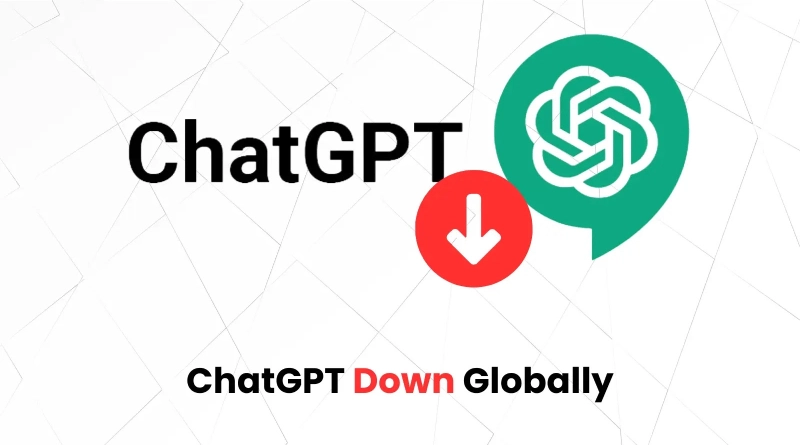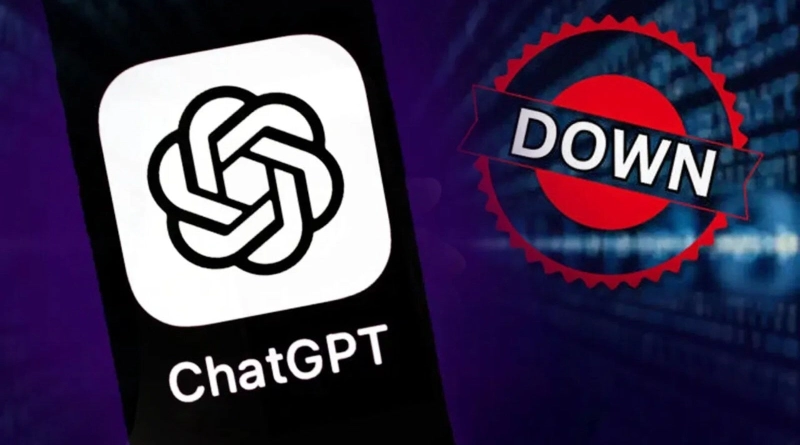ChatGPT Down? Global Outage Sparks Frustration and Highlights AI Dependency
ChatGPT, the popular AI chatbot built by OpenAI on September 3, 2025, experienced a massive global outage that disrupted the workflow of millions of users around the world. In India and the United States, the worst affected, the event highlighted the increasing amount of personal, professional, and enterprise activities that rely on AI. When users rushed to social media to express their frustrations and to exchange memes, OpenAI had to scramble to handle the problem, making many wonder whether this essential technology can be trusted. This paper takes a look at the outage, its effects and what the outage tells us about our AI-driven world.
What Happened: A Global Disruption
It started going down at around 12:25 PM IST, but by approximately 12.56 PM, there were reports of the most, as per Downdetector, a service that monitors online service outages. In India, more than 500 users were complaining, 82% of them mentioned unresponsive chats, 15% reported a problem with the site, and 2% said that there is a problem with the apps. David King, The New York Times, reported similar trends in the U.S., where 93 percent of complaints were associated with the main functionality of the chatbot. Its users were presented with error messages such as, “Hmm… something went wrong or a network error has been encountered. Please re-check your connection and re-try again, according to NDTV and The Hindu.
By 13:40 IST, OpenAI accepted the problem on its status page and wrote that 23 components, such as login, web, mobile apps (iOS and Android), search and image generation were impacted. According to Gadgets 360, the company figured out the cause of the problem and started mitigation measures by 14:43 IST, and the services were fully restored by 15:53 IST. Nevertheless, OpenAI has not revealed the precise reason and is yet to provide an elaborate explanation to users.
Unique Insight : Unlike prior outages, e.g., the one in December 2024, which was related to a failure in an upstream provider (which Microsoft presumably used as the infrastructure), the scale of the incident (impacting almost all ChatGPT elements) would suggest a systemic issue at the server level. The dearth of information regarding the cause is doubtful in terms of scalability as the quantity of ChatGPT users grow, especially in highly trafficked places like India, which comprise 13.5% of monthly active users of the Internet worldwide, according to Mary Meeker in her 2025 Internet Trends Report.

Impact and User Reactions
The stagnation of the work of industries was interrupted. The assistance of ChatGPT delayed the educational process, content creation, and coding of students and professionals in India. According to Zee News, to keep on using the API, developers, who were used to process API to automate, and journalists, who were used to find out more extended their holds. That was the mood in corporate accounts in the U.S. and on social media, like X, a meme that reads, Everyone running to X to see whether ChatGPT is down, was shared, according to News18.
The incident also revealed the increasing reliance on AI. In India, where the AI market size is expected to hit 7.8 billion dollars by 2027 (NASSCOM data), these shocks can trickle down into startups and firms that will have embedded AI into their routine activities. The response of social media was mixed, with some users taking the issue of excessive dependence on a single product humorously, making jokes about not knowing how to write an email when ChatGPT is unavailable, with others expressing the fear of losing control.
Local Context : During the time of the outage, in India, AI adoption was increasing in the tier-2 and tier-3 cities, where, thanks to cheap internet and mobile phones, tools such as ChatGPT became available to learners and the business realm. This dependence increases the effect of interference, particularly students taking competitive exams or entrepreneurs writing business proposals, as LiveMint notes.
Alternatives During Downtime
During one of the outages of ChatGPT, Daisy Lopez of LiveMint reported that users switched to other AI chatbots like Google Gemini, Microsoft Copilot, Perplexity AI, Jasper Chat, and YouChat, all of which stayed online. These platforms have the same functionality (e.g., text-generation, brainstorming, or real-time searchable research). To mention just a few examples, Perplexity AI thrived on academic references, whereas features like image generation by Copilot resonated with creators.
Unique Insight : The crash brought to light a weakness in the redundancy policy of AI-based workflows. There is a possibility to extend the AI tool kit of individual businesses and people, to allow them to combine various platforms to be viable. This is especially true in India where small businesses do not often have the means to adapt fast to changes in technology.
OpenAI’s Response and Broader Implications
The ability to respond swiftly to the incident, in just hours, showed that OpenAI is responsive but frequent outages (December 2024, February 2025, and June 2025) are an issue that could be viewed as a regular issue with the reliability of the system. The later 12-hour outage of June 10 was the longest one so far, according to News18. Such events coincide with the OpenAI campaign to improve safety, including parental controls that the company announced on September 2, following tragic events surrounding the chatbot processing sensitive conversations, according to LiveMint.
The failure also drives AI infrastructure resilience debates. Since ChatGPT is becoming a part of various workflows across the world, including education and enterprise automation, uptime is essential. The silence of OpenAI on the underlying cause indicates possible problems in the expansion of infrastructure to satisfy demand, particularly as new functionalities such as Sora and much more advanced APIs overload servers.
Looking Forward: Building a Robust AI Ecosystem
The 3 hour outage on September 3 is a lesson to users and developers who need to handle contingencies. Concerning the individual case, the risks may be minimized by considering the alternatives, i.e. Claude or Grok. As a business, the hybrid AI solution (a combination of local and cloud-based solutions) has the potential to provide stability. The transparency offered by OpenAI (post-mortem within days would be a promise) will make it easier to restore trust.
And lastly, the ChatGPT crash showcased the advantages and weaknesses of the dependency on AI. With India and the U.S. on the forefront of the usage, the establishment of strong and diversified AI ecosystems is crucial. Keep abreast of development through the status page at OpenAI, and other tools to stay on top of workflows. It is the phenomenon that enables us to see that AI can transform the character of life and we need to become hard and malleable.
Disclaimer
The information presented in this blog is derived from publicly available sources for general use, including any cited references. While we strive to mention credible sources whenever possible, Web Techneeq – Website Development Agency in Mumbai does not guarantee the accuracy of the information provided in any way. This article is intended solely for general informational purposes. It should be understood that it does not constitute legal advice and does not aim to serve as such. If any individual(s) make decisions based on the information in this article without verifying the facts, we explicitly reject any liability that may arise as a result. We recommend that readers seek separate guidance regarding any specific information provided here.

